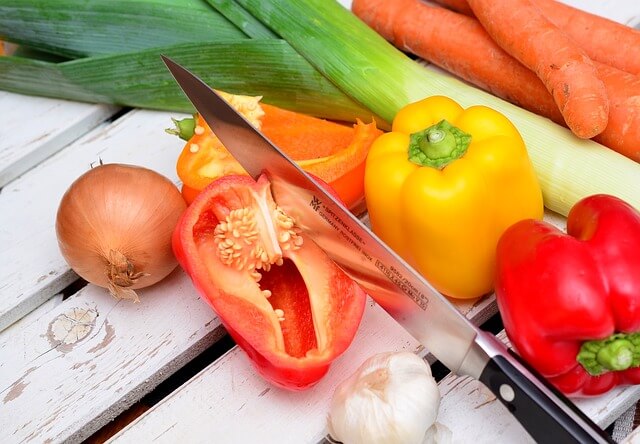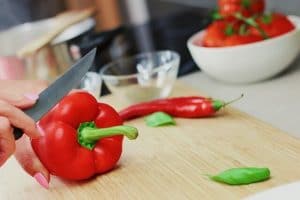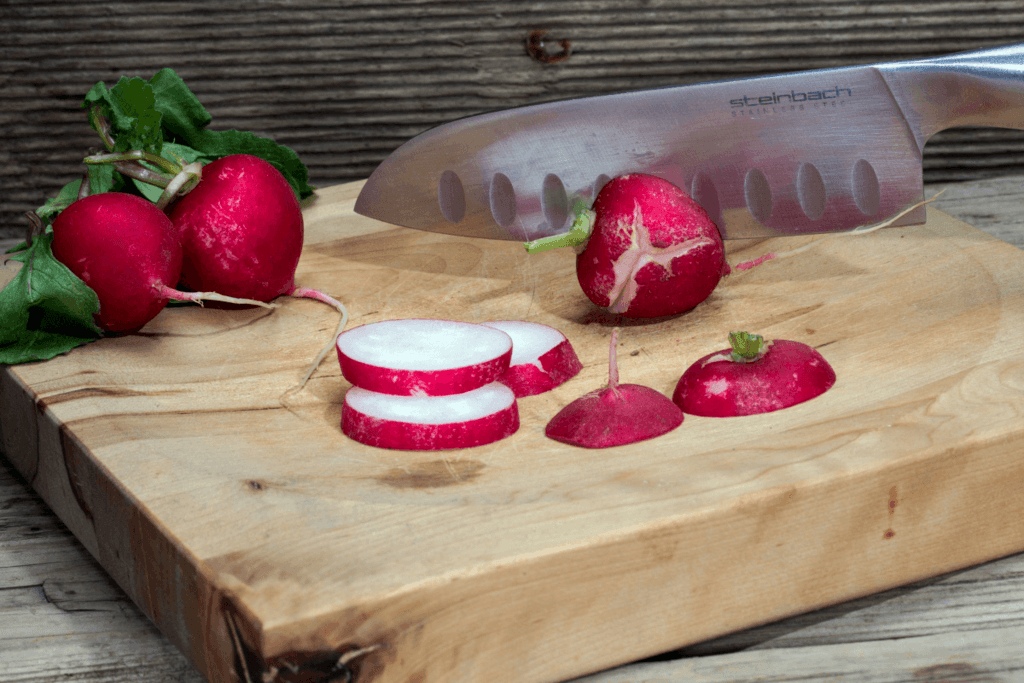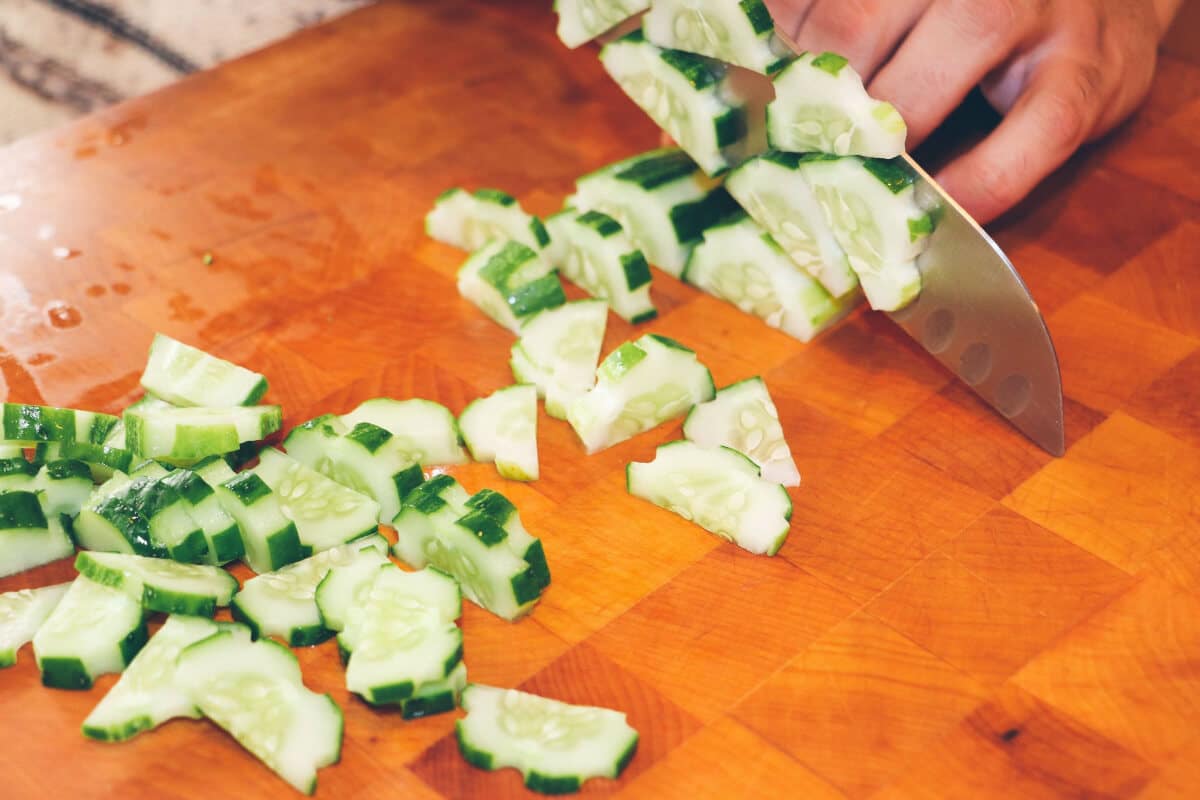Last 2 month, our Editor-In-Chief (oftentimes called as ‘Mr. Fogg), a food and travel enthusiast has been traveling around the world in 80 days –
in search of the best things to eat from restaurants from coast to coast.
No, there was no wager set!
And sadly, neither did he employ me, the Former Curator on his Bon Voyage.
However,…
Fortunately, our Editor-In-Chief did bring me a Fillet Knife Souvenir!
Unfortunately, it was not my well- expected German Style Carving Knife!
So, I asked – ‘What made you pick the Dexter Wide Fillet Knife as a souvenir?’
As expected, the one-line reply was –‘To improve your knife skills, of course’. (So, typically him!)
But, at the last moment of Mr. Fogg’s 60 minutes ‘What–How-Where I Ate & What-How-With-Whom I Cooked -Salami’ demonstration, a light suddenly struck my brain.
The curious case of the souvenir knife is that there’s a Chef’s story behind.
So, my brain came up with the idea of summarizing a genuine piece of information on knife techniques I just learnt. This would of course elicit my reader’s reactions and then finally elicit my Chief’s applaud.
Applauds – Applauds & A Myriad Of Applauds!!!
Let’s now come to our point on what I learned about 15 knife techniques and how to speed up our dicing, slicing and mincing process.
8 reason why it is important to know knife techniques for cutting vegetables

- To improve food presentation and make the platter look appealing. The visual appeal of a dish brings a lot of difference to appetite.
- To maintain uniformity in cutting vegetables of a dish. Nobody wants some potatoes mushy while others are plain hard in a platter.
- To improve knife skills for cutting different shapes and sizes
- To enhance the flavor and aroma of the dish
- Understanding knife techniques when cutting vegetables because the surface area of the vegetable affects its texture
- To simplify cutting vegetables, fruits, and other food items.
- To make food preparation less time-consuming; speeding up slicing, dicing and mincing process
- Did you know different knife-mincing methods affect the taste of garlic??? Yes, true indeed! Using a sharp knife and the way you mince the garlic affects the overall taste of your food.
And, no matter how powerful your food processor might be, no matter how many blades it come up with- often times the machine just doesn’t do the cutting job properly.
Eventually, you just have to surrender yourself to the mighty hands and use the ultimate kitchen knife.
Here, we are covering how-to basic knife skills and basic cutting techniques so that we can take advantage of them and create more varied, texture, taste and flavorsome food.
Knowing the accurate 15 Knife Cutting Techniques of vegetables will dish out good-looking and good-to-eat recipes No wonder too that!
15 Culinary Knife Techniques-

- The Macédoine cut – The Macedoine cutting techniques are used not just for cutting but also for chopping. The size of the cut varies depending on the dish. Usually, the sizes of Macédoine cut chunks are about ¼ inch thick.
Dish Example:
- The Mince cut – In the world of Culinary Art, the minced cut means the smallest cutting technique to cut the smallest uniform sizes.
- The Dice Cuts –
The Large Dice (Carré ) – 2 cm – This type of knife cutting technique is the easiest one and often used for cutting mangos, melons, and stocks. 8” chef’s knife is usually used for cutting large dices.
Dish Example – Fruit Salad
- The medium Dice (Parmentier) – ( 1.25 cm)
Dish Example: Potato Salad
- The small dice (Macédoine): The smallest dices are usually 6mm
- The Brunoise Dice (Fine Dice)- The Brunoise Dices are usually 1/16-inch cubes and can be done perfectly by a basic vegetable knife. However, an 8’ chef’s knife is way better.

Dish Example: Soups of all sorts
- The Baton: The Baton cuts resemble large dice cutting techniques and the cut sizes appear the largest stick-cut.
- The Batonnet – The Batonnet cut sizes are typically ¼” by ¼” by 2.5-3” inches All Batonneting technique starts by cutting off both ends of the item and then squaring off and slicing.
- The Julienne Cut( allumette/French cut) – The Julienne cut is basic vegetable knife used for cutting raw or firm vegetables, for instance- carrots, parsnips, potatoes, etc. j
To be more precise, Julienne potatoes are long thin strips of Julienne cut potatoes.
Dish Example: Julienne Potato Salad
11. The Payasanne Cut –The Payasanne knife cut techniques are best recommended for cutting rough-textured vegetables.
Dish Example: A quick Roast broccoli salad
12. The Chiffonade Method – The Chiffonade method of cutting is typically used on leafy vegetables like lettuces or basils, spinach, and other herbs
Dish Example: Summer Vegetable Mix Salad
13. The Jardiniere Cut – The Jardiniere cut resembles the Baton Cutting techniques. The main difference is that the Jardiniere term is a French cooking term and these types of cutting technique is needed to cut smaller sizes of frozen carrots, peas, turnip or others and fruit mixes.
Dish Example: Stuffed chicken with Jardinière Vegetables
14. Roll Cut( Oblique Cut) – used to add more visual appeal with basic type of roll knife. Sushi knife is typically used for making the roll cuts.
15. Lozenge Vegetable Cuts – Lozenge cuts are diamond-shaped vegetable cuts and similar to Payasanne cuts; for instance Lozenge-shaped carrots.
Dish Example: Glazed Carrots
16. Fermière Cuts – these types of vegetable cutting techniques are first started by cutting lengthwise and then parallel cuts. The Premiere cut sizes can be of varied thickness as needed. However usually the thickness is about 3mm.
17. Mirepoix Cuts – Mirepoix is one of the most common French Vegetable Cut used for roughly chopping vegetables.
Dish Example: French Vegetable Tian with Onion-roasted Potatoes
Starting with my ‘Dexter Wide Fillet Knife’ souvenir, as the base of our Knife Learning Basics, we explored the various cutting techniques and knife skills to accelerate the world of Culinary Art.
On the Bottom line, Food has many shapes, heights, and dimensions.
Modifying shapes of food by cutting into cubes, spheres and whatnot add visual appeal to it.
Cutting vegetables in un-uniform or without maintaining cutting techniques will turn a good dish into a gross platter.
Thus, knowing the basics of Vegetable Cutting Techniques is a chance to enhance the food in a much significant way.

Leave a Reply